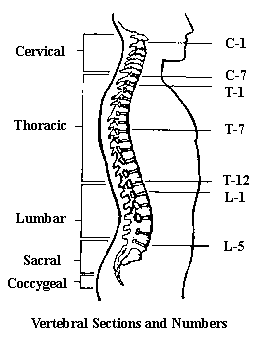The ASIA impairment scale describes a person’s functional impairment as a result of their spinal cord injury.
A- Complete
 No motor or sensory function in the lowest sacral segment (S4-S5)
No motor or sensory function in the lowest sacral segment (S4-S5)
B- Incomplete
Sensory function below neurologic level and in S4-S5, no motor function below neurologic level
C- Incomplete
Motor function is preserved below neurologic level and more than half of the key muscle groups below neurologic level have a muscle grade less than 3.
D- Incomplete
Motor function is preserved below neurologic level and at least half of the key muscle groups below neurologic level have a muscle grade 3.
E- Normal
Sensory and motor function is normal








WHAT EXACTLY MEANS “BELOW NEUROLOGICAL LEVEL”?
Hi,
I would like to ask about AIS calssification problem. If the patient below the neurological level one muscle have grade 1 and other musle are 0 nad anal sensation is “yes”. Is he AIS B or C.
AIS C, half of the muscles have grade less than 3, are the grade 0-2. Should there be activity half of the key muscles?
B = Sensory incomplete. Sensory but not motor function
is preserved below the neurological level and includes the
sacral segments S4-S5, AND no motor function is preserved
more than three levels below the motor level on
either side of the body.
C = Motor incomplete. Motor function is preserved
below the neurological level, and more than half of
key muscle functions below the single neurological level
of injury have a muscle grade less than 3 (Grades 0–2).
For an individual to receive a grade of C or D, i.e.
motor incomplete status, they must have either (1)
voluntary anal sphincter contraction or (2) sacral
sensory sparing (at S4/5 or DAP) with sparing of
motor function more than three levels below the
motor level for that side of the body. The Standards at
this time allows even non-key muscle function more
than 3 levels below the motor level to be used in determining
motor incomplete status (AIS B versus C). (from 2011 revised AIS)
I would like to ask one doubt regarding sensory assessment in Asia scale…. why we are checking only pinprick and light touch for sensory assessement
The light touch tells us whether the anterior spinothalamic tract is intact and the pinprick tells us whether or not the lateral spinothalmic tract is functioning. These are both sensory pathways that are found in the spinal cord.
[…] The difference between paraplegics, quadriplegics, hemiplegics, tetraplegics, and what the ASIA scale […]